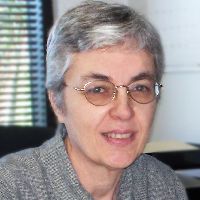New EEG display and training options will be demonstrated, and the process of optimizing reward frequencies according to the individual's response to training will be demonstrated with one or more volunteers.
Recent advances in neurofeedback instrumentation and clinical application are allowing us to extend and refine our clinical results. The efficacy of these new techniques challenges our understanding of how our brains perceive and respond to the particular EEG information that we are providing as feedback.
We will discuss the very different roles of rewards and inhibits, and how they relate to normal regulatory rhythms versus abnormal disregulated EEG activity. We will consider different clinical options in combining inhibit bands and optimizing reward frequencies with one and two-channel EEG training. We will also discuss the role of bipolar training in desynchronizing EEG activity and stabilizing brain function, and the integration of interhemispheric with single-hemisphere training.
A variety of neurofeedback instrumentation will be used to demonstrate new EEG display and training options, including BioExplorer, BrainMaster and Biograph Infiniti. We will also demonstrate with one or more volunteers the process of optimizing reward frequencies according to the individual's response to training.
Workshop outline:
1. A developing model of EEG training:
Early work with beta and SMR rewards, theta and EMG inhibits
Event detection versus shaping of EEG
Good and bad frequencies
Activation and arousal
Differing roles of rewards and inhibits
Implications of bipolar training - phase and synchrony
Desynchronization and stability / large and small scale
2. Clinical applications:
Rewards
Optimizing by arousal
Left/right
Left / right (interhemispheric)
Front/back
Inhibits
Wide inhibits
Targeted inhibits
Multiple inhibits
Windowed inhibits
3. Demonstration:
Display and training options with BioExplorer, BrainMaster, Biograph
One and two-channel options
Optimize reward frequency with volunteer subject
Sue Othmer is Clinical Director of the EEG Institute in Woodland Hills, California. She has been involved in clinical research and the development of EEG biofeedback protocols since 1988. She teaches professional training courses in EEG biofeedback, and presents clinical research findings in professional forums.


